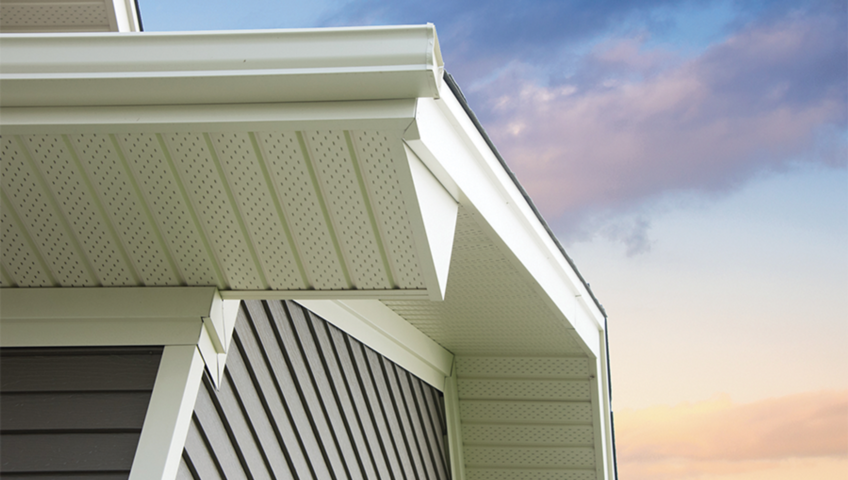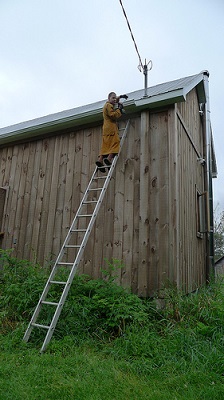
The Art of Color Selection: Choosing Siding and Eavestroughs That Complement Your Toronto Home
The Art of Color Selection: Choosing Siding and Eavestroughs That Complement Your Toronto Home
The exterior of your Toronto home is not just a protective shell – it’s a canvas that reflects your personal style and enhances your property’s curb appeal. Choosing the right colors for your siding and eavestroughs can significantly impact the overall aesthetic and value of your home. In a city known for its diverse architectural styles and changing seasons, mastering the art of color selection is essential to creating a harmonious and visually appealing exterior.
Harmonizing with Toronto’s Architectural Landscape
Toronto boasts a rich tapestry of architectural styles, from historic Victorian homes to sleek modern designs. When selecting colors for your siding and eavestroughs, it’s important to consider your home’s architectural style and the surrounding neighborhood. While you don’t have to conform entirely, choosing colors that complement the existing aesthetic can help your home blend in while still standing out in a positive way.
Considering the Impact of Seasons
Toronto experiences distinct seasons, each with its own color palette. A color scheme that works well during the lush green of summer might not have the same effect against the backdrop of winter’s snow. Consider the seasonal changes when choosing colors for your siding and eavestroughs. Opt for colors that can adapt to the different seasons and maintain their appeal year-round.
Creating Visual Interest through Contrast
Creating visual interest doesn’t always mean using multiple vibrant colors. Sometimes, the right amount of contrast between your siding, eavestroughs, and other exterior elements can make a statement. Light-colored siding against dark eavestroughs can create a sleek and modern look, while complementary colors can evoke a sense of harmony and balance. It’s important to strike the right balance to avoid overwhelming the eye.
Showcasing Your Home’s Features
Color selection can accentuate your home’s architectural features and highlight its unique characteristics. Darker shades can emphasize strong lines and details, while lighter colors can make your home appear larger and more open. Using different colors for trim and accents can draw attention to specific areas of your home’s facade, such as windows, doors, and architectural embellishments.
Considering Material Properties
The type of materials used for your siding and eavestroughs can influence color choices. Different materials may have limitations in terms of available color options or how certain colors react to sunlight and weather conditions. It’s important to choose colors that not only look appealing but also maintain their vibrancy and integrity over time.
Gathering Inspiration and Seeking Professional Advice
Before finalizing your color choices, gather inspiration from various sources. Magazines, online resources, and even your neighborhood can provide valuable ideas. Additionally, consider seeking the advice of professionals, such as color consultants and designers, who can offer insights based on their expertise and experience.
Testing Samples and Visualizing the Outcome
Colors can look different under various lighting conditions. To avoid surprises, it’s a good idea to test paint samples on a small area of your home’s exterior and observe how they appear in different lighting throughout the day. This step can help you make a more informed decision and prevent any regrets after the paint is applied.
Conclusion
Choosing the right colors for your siding in Toronto is a creative endeavor that requires thoughtful consideration. By taking into account the architectural style, seasonal changes, and the unique characteristics of your home, you can create an exterior that reflects your personal taste and enhances the overall curb appeal. With careful planning, a keen eye for aesthetics, and perhaps some professional advice, you can transform your home’s exterior into a masterpiece that harmonizes with Toronto’s diverse landscape and makes a lasting impression.
The Art of Color Selection: Choosing Siding and Eavestroughs That Complement Your Toronto Home
The exterior of your Toronto home is not just a protective shell – it’s a canvas that reflects your personal style and enhances your property’s curb appeal. Choosing the right colors for your siding and eavestroughs can significantly impact the overall aesthetic and value of your home. In a city known for its diverse architectural styles and changing seasons, mastering the art of color selection is essential to creating a harmonious and visually appealing exterior.
Harmonizing with Toronto’s Architectural Landscape
Toronto boasts a rich tapestry of architectural styles, from historic Victorian homes to sleek modern designs. When selecting colors for your siding and eavestroughs, it’s important to consider your home’s architectural style and the surrounding neighborhood. While you don’t have to conform entirely, choosing colors that complement the existing aesthetic can help your home blend in while still standing out in a positive way.
Considering the Impact of Seasons
Toronto experiences distinct seasons, each with its own color palette. A color scheme that works well during the lush green of summer might not have the same effect against the backdrop of winter’s snow. Consider the seasonal changes when choosing colors for your siding and eavestroughs. Opt for colors that can adapt to the different seasons and maintain their appeal year-round.
Creating Visual Interest through Contrast
Creating visual interest doesn’t always mean using multiple vibrant colors. Sometimes, the right amount of contrast between your siding, eavestroughs, and other exterior elements can make a statement. Light-colored siding against dark eavestroughs can create a sleek and modern look, while complementary colors can evoke a sense of harmony and balance. It’s important to strike the right balance to avoid overwhelming the eye.
Showcasing Your Home’s Features
Color selection can accentuate your home’s architectural features and highlight its unique characteristics. Darker shades can emphasize strong lines and details, while lighter colors can make your home appear larger and more open. Using different colors for trim and accents can draw attention to specific areas of your home’s facade, such as windows, doors, and architectural embellishments.
Considering Material Properties
The type of materials used for your siding and eavestroughs can influence color choices. Different materials may have limitations in terms of available color options or how certain colors react to sunlight and weather conditions. It’s important to choose colors that not only look appealing but also maintain their vibrancy and integrity over time.
Gathering Inspiration and Seeking Professional Advice
Before finalizing your color choices, gather inspiration from various sources. Magazines, online resources, and even your neighborhood can provide valuable ideas. Additionally, consider seeking the advice of professionals, such as color consultants and designers, who can offer insights based on their expertise and experience.
Testing Samples and Visualizing the Outcome
Colors can look different under various lighting conditions. To avoid surprises, it’s a good idea to test paint samples on a small area of your home’s exterior and observe how they appear in different lighting throughout the day. This step can help you make a more informed decision and prevent any regrets after the paint is applied.
Conclusion
Choosing the right colors for your siding in Toronto is a creative endeavor that requires thoughtful consideration. By taking into account the architectural style, seasonal changes, and the unique characteristics of your home, you can create an exterior that reflects your personal taste and enhances the overall curb appeal. With careful planning, a keen eye for aesthetics, and perhaps some professional advice, you can transform your home’s exterior into a masterpiece that harmonizes with Toronto’s diverse landscape and makes a lasting impression.








